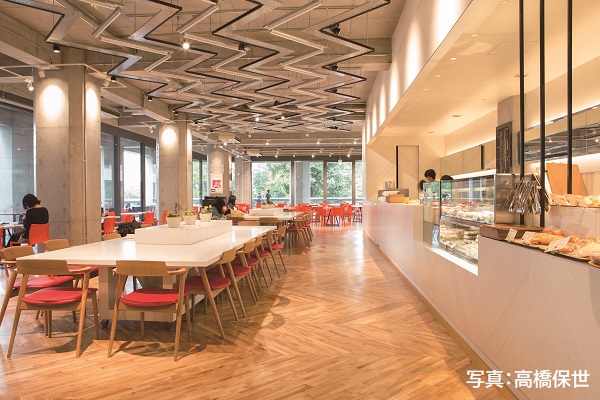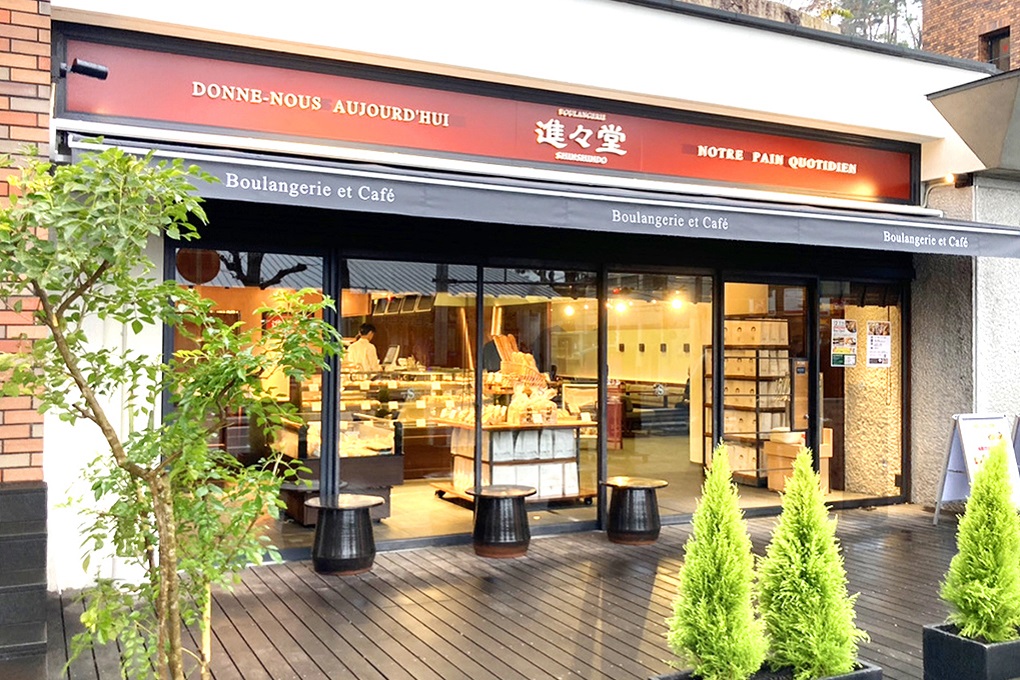Kyoto Art Theater
About Kyoto Art Theater
Established by Kyoto University of Arts and Design in 2001, Kyoto Art Theater is the first full-fledged university-run theater in Japan. In addition to passing down Japanese traditional performing arts to new generations, the theater also hosts diverse array of experimental works and strives to explore greater creative possibilities in music, dance and play. Through the performing arts, Kyoto Art Theater conveys the unique traditions and creative spirit of Kyoto to the world.
About the Performance Spaces:
Kyoto Art Theater is comprised of two distinct spaces: Theater Shunjuza, which was designed as a Kabuki-style proscenium theater, and studio21, a black-box theater designed for multidisciplinary performance work.
These two distinct spaces allow for a diverse range of performing arts, from traditional and classical works to cutting-edge multidisciplinary performances.
Location:
Kyoto University of the Arts
* ”Kyoto University of Art and Design” was named as “Kyoto University of the Arts” as of April 1st, 2020.
2-116 Uryuyama, Kitashirakawa, Sakyo-ku, Kyoto 606-8271
Administration:
Kyoto Performing Arts Center (Director: Yoshitaka Ando, professor of Kyoto University of the Arts)
Interdisciplinary Research Center for Performing Arts, authorized as a joint usage/research center by the Ministry of Education, Culture, Sports, Science and Technology since 2013.


Photo by Toshihiro Shimizu
Theater Shunjuza
The stage and seats were designed based on a Kabuki-theater which contains traditional functions such as Hanamichi (flower path), Mawari Butai (revolving stage) and Toya (a waiting room used by actors). Shunjuza also has an orchestra pit area and can present contemporary and western performing arts including opera.
Shunjuza Artistic Director:
Kanjuro Fujima Ⅷ (since November, 2023)
Stage Dimensions:
Front stage size 18m, front height about 6m30cm–7m60cm.
Depth about 17m.
Grid height about 16m.
Seats:
The first Floor: 528 seats with Hanamichi set, 603 without Hanamichi set, 501 with orchestra pit, include five wheel-chair sections.
Second Floor: 204 seats.
Maximum: 807 seats.
studio21
studio21 was designed as an experimental space for various and multidisciplinary performances including contemporary theater and dance. The space is a black-box theater featuring movable technical systems for light, sound, and pipe grids that can hold various technical devices and stage items. Movable seating allows a diversity of layouts and stage settings.

Photo by Toshihiro Shimizu
Joint Usage / Research Center
Base overview
The Interdisciplinary Research Center for Performing Arts at Kyoto University of the Arts was founded in 2013 as a certified Joint Usage / Research Center by the Japanese Ministry of Education, Culture, Sports, Science and Technology.
The parent organization of the research center is the Kyoto Performing Arts Center (KPAC), created to foster a more organic connection between creation and scientific research in 2001. KPAC is supported by various grants including a grant from the Agency of Cultural Affairs. The unique strength of KPAC as a research center is to be equipped with Kyoto Art Theater, which is comprised of a kabuki theater ‘Shunjuza,’ and a multipurpose small theater‘studio21’. Having full scale performing facilities, KPAC, as a university theater, sets out two missions; 1. The Factory Project – to produce and present performing arts work and 2. The Laboratory Project – to research and analyze issues that may, one day, be included in a performing arts creation.
The Interdisciplinary Research Center for Performing Arts utilizes Kyoto Art Theater as its research base and aims to implement laboratory projects on performing arts research and creation.
Onto the Second Stage
Various important performing arts have been brought to life in Japan over last 1000 years, and they are still frequently practiced today. The way traditions have been handed down from generation to generation and yet holds contemporary value here is quite unique in the world topology. Gigaku, that was introduced to Japan in the 7th century is unfortunately extinct, but art forms that came later such as gagaku (bugaku), nohgaku (noh and kyogen), ningyō jōruri (bunraku) and kabuki, are still alive in the 21th century. In the meantime, Japanese modern theater, which started off by importing western theatrical traditions, has drastically developed its diversity and Japan has become one of the leading countries in performing arts.
Kyoto Performing Arts Center encompasses both Japanese traditional and modern performing arts in its programs. And in 2013, the center was certified as a Joint Usage / Research Center by the Ministry of Education, Culture, Sports, Science and Technology. The aim is to become an Interdisciplinary Research Center for Performing Arts and the center has produced many performing arts projects that emphasize integrating the notion of “creation” and “research”.
In 2019, the center was certified as a Joint Usage / Research Center for another 6 years. In this second term, we are determined to continue to produce rich contemporary performing arts programs that reflect our changing society, expanding on our successes in the first term.
Fumio Amano
Former director of Joint Usage / Research Center
Emeritus professor of Osaka University
Information on Food and Beverages
Please feel free to use the café and cafeteria before and/or after the performances
Breath KUA
This café is located between the entrance to Kyoto University of The Arts and the theater. Open to the public, in this stylish atmosphere fit for an art university, visitors can enjoy a menu perfect for taking a break – special coffee blends, expresso, and caramel macchiato. It also features a well-rounded food menu, including popular bread, Danishes, and Campagne sandwiches from established Kyoto bakery Shinshin-do. We recommend you enjoy them with daily soups such as minestrone. Also, smoothies and cakes such as Mont Blanc and chocolate mousse go well with coffee, perfect for pre-show or recess tea time.
Breath KUA
Opening hours: 10:00am-5:00pm (regular days)
Drip coffee 120 yen / Smoothies from 250yen / Cakes from 280 yen
* Opening hours may change on weekends and National Holidays. Please check the website below for more information.
https://www.kyoto-art.ac.jp/student/life/sale_info/

Shinshindo
Restaurant-style shops where you can enjoy a wide-range of menu items, ranging from a bread-based breakfast to lunch and dinner.
We offer a bread service (only for customers who ordered menu items with an option for free extra bread servings that allows you to choose any bread you like from about 10 different kinds of bread.
You can also take advantage of the free refills of hot coffee! Our shops are known as places where you can relax and feel at home.
Shinshindo
Opening hours: 8:00am-5:30pm (last order 16:30pm)
https://www.shinshindo.jp/branches/kyoto-art.html

Student Cafeteria
This cafeteria is located on the third floor of Shiseikan, designed by architect Kuma Kengo and opened in 2008. The interior is decorated with bright pastel colors, and from a menu with 1000 varieties, each day some 100 items are prepared. You can enjoy generous portions of food and healthy snacks, including set menus, at reasonable prices. Breakfast and evening food items are also available.
Student Cafeteria
Opening hours: 8:00am-8:00pm (regular days)
* Opening hours may change on weekends and National Holidays. Please check the website below for more information.
https://www.kyoto-art.ac.jp/student/life/sale_info/

Access Information
2-116 Uryuyama Kitashirakawa, Sakyo-ku, Kyoto, 606-8271 Japan
From JR Kyoto station, Keihan Sanjo station, Hankyu Kyoto-kawaramachi station
Take bus #5 for Iwakura, get off at Kamihatecho / Uryuyamagakuen Kyoto Geijutsudaigaku-mae(Kyoto Univ. of the Arts) *about 50 minutes from JR Kyoto station
From subway Marutamachi or Kitaoji station
Take bus #204, get off at Kamihatecho / Uryuyamagakuen Kyoto Geijutsudaigaku-mae(Kyoto Univ. of the Arts) *about 15 minutes from each station
From Keihan Demachiyanagi station
Transfer to Eizan Railway, get off at Chayama・Kyoto-Geijutsudaigaku station. About 15 minutes-walk from Chayama・Kyoto-Geijutsudaigaku station.
It takes 10 minutes by taxi to the University.
NOTE: Travel times are approximates and may change depending on weather and traffic conditions. There is no parking at the university, so please refrain from coming by car, motorcycle, or bicycle.
